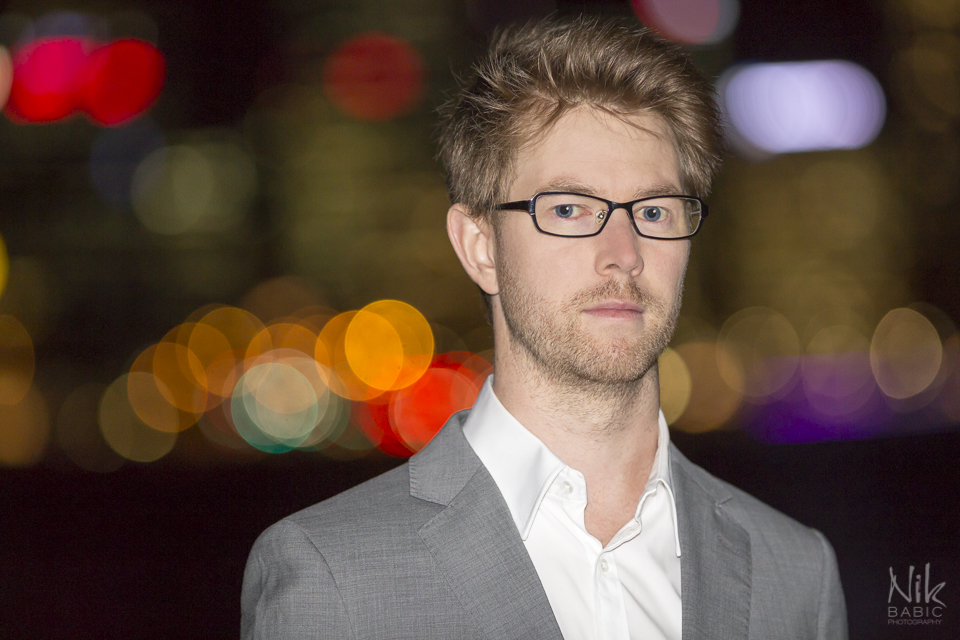The WA composer’s Clarinet Quintet is his second work featured at an International Society for Contemporary Music festival.
Article supplied by Music Australia as part of our classical music partnership.
There continues to be one premier forum by which Australia’s composers are presented to a world audience, and that is the International Society for Contemporary Music’s World Music Days – or World New Music Days as it now tends to be called. This uniquely important festival is held in a different host city each year and showcases new works by composers representing ISCM’s fifty-plus member countries. It is, as John Davis, CEO of the Australian Music Centre observes, “the only event in the world where such a diversity of nationalities gather, and such a diversity of works are presented.”
This year’s World New Music Days has just concluded in Vancouver, Canada, on November 8, and its scale was breathtaking. Each member country was required to submit at least one work, to a maximum of six across 14 different instrumentation categories. So that meant there were over 600 submissions, of which 89 works were performed during the week-long event in 10 venues around Vancouver.
 Composer Lachlan Skipworth. Photo © Nik Babic
Composer Lachlan Skipworth. Photo © Nik Babic
“The festival is therefore pretty busy, often four or five concerts a day for more than a week,” Davis observes. “It’s inevitably an amazing snapshot of what’s happening with compositional approaches, musical styles, and influences.”
Lachlan Skipworth’s Clarinet Quintet: The eternal (2016) was selected as the official Australian work this year. From Western Australia, Skipworth is a composer who is definitely on the rise. He spent three years studying the shakuhachi in Japan and in 2014 won the $25,000 Paul Lowin Orchestral Prize for his Concerto for Clarinet and Orchestra. He describes his Clarinet Quintet as “a dystopian response to our current time through the deep sadness of its harmonic language and its drawn out melodic lines”. The work was performed by WolfGANG, a collective of musicians from Canada’s National Arts Centre Orchestra in Ottawa.
This is the second time Skipworth has been represented at ISCM World New Music Days – his saxophone quartet Dark Nebulae was performed in 2015 in Slovenia – and it promises to build on his already well-established profile. As Davis points out, “For any composer whose work is performed, the potential for something more to evolve from that is amplified because of the delegates from many countries in attendance.”
Over the years, ISCM festivals have brought international recognition to many Australian composers. “Liza Lim attributes the start of her international career to the Arditti Quartet’s performance of her work at the ISCM festival in Hong Kong in 1988. David Chisholm had a performance of an orchestral work in Sweden in 2009 which contributed to developing his international networks,” explains Davis.
“These are just a few examples, but any composers who have works performed at ISCM festivals have the opportunity to connect with other delegates, performing ensembles, develop relationships and networks. The recordings of performances broadcast and disseminated in various ways in many countries, and this all translates into attention, and further opportunities.”
It is a credit to five further Australian composers that they had works selected for this year’s ISCM. All were entered onto the ISCM database, making them known to ISCM members and concert programmers worldwide. In the orchestral category was Cathy Milliken’s Pingvellir from her Earth plays series of sound pictures; this won Orchestral Work of the Year at last year’s APRA AMCOS Art Music Awards. In other categories were Joshua Hyde’s Interface for amplified piano and video, Kate Neal’s What hath II (2012) for percussion quartet, Rosalind Page’s Nous sommes embarques (2011) for string quartet, and Samuel Smith’s Threaded through meridians for mixed sextet.
Australia’s involvement in the ISCM is longstanding. Percy Grainger’s Molly on the Shore was included in its first festival programme in 1922. Peggy Glanville-Hicks was represented twice, with her Choral Suite in 1938 and Concertino da Camera performed in 1948. Peter Sculthorpe’s Piano Sonatine was performed in 1955. Later on Australia’s membership of ISCM lapsed, but in 1961 it was reactivated by the University of Sydney’s Music Department and state chapters were soon established. Richard Meale was Australia’s most represented composer thereafter at ISCM festivals, with performances of his Flute Sonata in 1963, Incredible Floridas in 1971, his first String Quartet in 1976, and Three Miro Pieces in 2005.
The Australian Music Centre “inherited” Australia’s representation on ISCM around 1993, and has maintained our active membership ever since. In this time and going right back to the 1960s, Davis says debates have emerged within ISCM about the shape of its festivals and whether they should be curated or follow an open programming approach that showcases what composers around the world are doing. “The showcase model currently prevails, thankfully, as diversity can be appropriately embraced and celebrated,” he says.
Australia last hosted the ISCM in 2010 in Sydney, and next year it goes to New Zealand. Davis says Australia will be attached to that event in some capacity – “but we don’t want to get in the way of what will be a very special edition there.” When will it come around again to this country? “Hosting a festival requires enormous resources and long-term planning,” he says, “so with the ISCM centenary year coming up in 2022, and some fierce competition developing behind the scenes, you never know what bids will emerge!”
Graham Strahle writes for Music Australia and is Adelaide music critic for The Australian.











Comments
Log in to join the conversation.